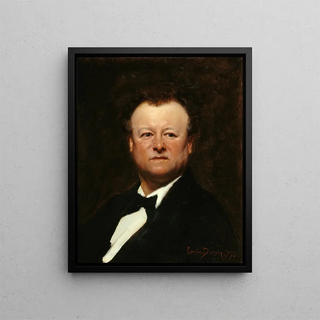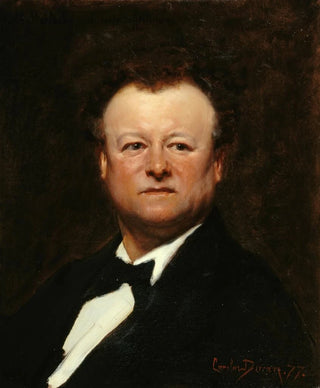Painting Portrait of Jean-François Berthelier 1830-1888 singer - Carolus-Duran | Art print


View from behind

Frame (optional)
In the fascinating world of 19th-century French painting, the "Art print of Jean-François Berthelier 1830-1888 singer - Carolus-Duran" stands out for its ability to capture not only the physical appearance of its subject but also the very essence of his personality. This iconic work demonstrates Carolus-Duran's skill in blending realism and intimacy, offering a poignant glimpse into the life of an artist at a time when music and painting intertwined to create an unparalleled cultural richness. The portrait, with its subtle lighting and meticulous details, invites the viewer to immerse themselves in Berthelier's musical universe while revealing the artist's impressive technical skills.
Style and uniqueness of the work
Carolus-Duran's mastery is evident in every brushstroke of this art print. His style, characterized by a realistic approach, manages to transcend mere representation to evoke a vibrant and lively atmosphere. Duran uses rich colors and striking contrasts to bring his subject to life, while maintaining a certain softness that smooths Berthelier's features. The composition of the piece, focused on the expressive face of the singer, immediately draws the eye and establishes an emotional connection with the viewer. This art print does not just show a man; it tells a story, that of an artist passionate about his craft, whose voice still resonates in the hearts of music lovers today.
The artist and his influence
Carolus-Duran, whose real name is Charles Émile Durand, is a significant figure of the 19th-century artistic movement. Raised in an environment where art and music were celebrated, he managed to establish himself as a renowned portraitist, influencing many artists of his time. Duran had this unique ability to capture the soul of his subjects, which earned him numerous patrons, from aristocrats to fellow artists. His innovative approach to portraiture, combining academic techniques with impressionist touches, paved the way for a new way of seeing and representing the world.

Matte finish

View from behind

Frame (optional)
In the fascinating world of 19th-century French painting, the "Art print of Jean-François Berthelier 1830-1888 singer - Carolus-Duran" stands out for its ability to capture not only the physical appearance of its subject but also the very essence of his personality. This iconic work demonstrates Carolus-Duran's skill in blending realism and intimacy, offering a poignant glimpse into the life of an artist at a time when music and painting intertwined to create an unparalleled cultural richness. The portrait, with its subtle lighting and meticulous details, invites the viewer to immerse themselves in Berthelier's musical universe while revealing the artist's impressive technical skills.
Style and uniqueness of the work
Carolus-Duran's mastery is evident in every brushstroke of this art print. His style, characterized by a realistic approach, manages to transcend mere representation to evoke a vibrant and lively atmosphere. Duran uses rich colors and striking contrasts to bring his subject to life, while maintaining a certain softness that smooths Berthelier's features. The composition of the piece, focused on the expressive face of the singer, immediately draws the eye and establishes an emotional connection with the viewer. This art print does not just show a man; it tells a story, that of an artist passionate about his craft, whose voice still resonates in the hearts of music lovers today.
The artist and his influence
Carolus-Duran, whose real name is Charles Émile Durand, is a significant figure of the 19th-century artistic movement. Raised in an environment where art and music were celebrated, he managed to establish himself as a renowned portraitist, influencing many artists of his time. Duran had this unique ability to capture the soul of his subjects, which earned him numerous patrons, from aristocrats to fellow artists. His innovative approach to portraiture, combining academic techniques with impressionist touches, paved the way for a new way of seeing and representing the world.
12,34 €






